In this blog, we’ll look at fish for a 20-gallon tank. The different and beautiful fish on this list can be perfect for keeping in a 20-gallon home aquarium.
Let’s get started.
Table of Contents:
- Fish for a 20-Gallon Tank: Size Matters
- How Many Fish Can You Keep in a 20-Gallon Tank?
- Types of Fish for a 20-Gallon Tank
- Laser Corydoras
- Neon Tetras
- Hatchet Fish
- Blue Crayfish
- Rasboras
- Guppies
- Cherry Shrimp
- Zebra Danios
- Electric Blue Rams
- Mollys
- Platies
- Mexican Dwarf Crayfish
- Pea Puffers
- Bristlenose Plecos
- Selecting Your Fish
- Cycling Your Tank
- The Importance of Water Changes
- A Recap
Fish for a 20 Gallon Tank: Size Matters
With fish tanks, size really does matter. Fish tank size will often dictate the types of fish you can keep in your tank and the number of fish; which will also vary based on other factors.
You want to always be sure you have the right tank for the fish you plan to keep. A 20-gallon tank is big enough to build into a nice and enjoyable tank that includes stunning and unique fish.
How Many Fish Can You Keep in a 20 Gallon Tank?
The number of fish you can keep in your 20-gallon fish tank will always depend on the types of fish you keep in your tank. Fish size, water requirements, and temperament are all attributes that will play into how many fish you can keep in an aquarium. The general rule in keeping fish is one gallon of water per inch of fish.
Remember, placing the wrong fish in the wrong sized fish tank can make the tank hard to manage and in some situations get your fish killed or maimed.
Types of Fish For a 20 Gallon Tank
1. Laser Corydoras
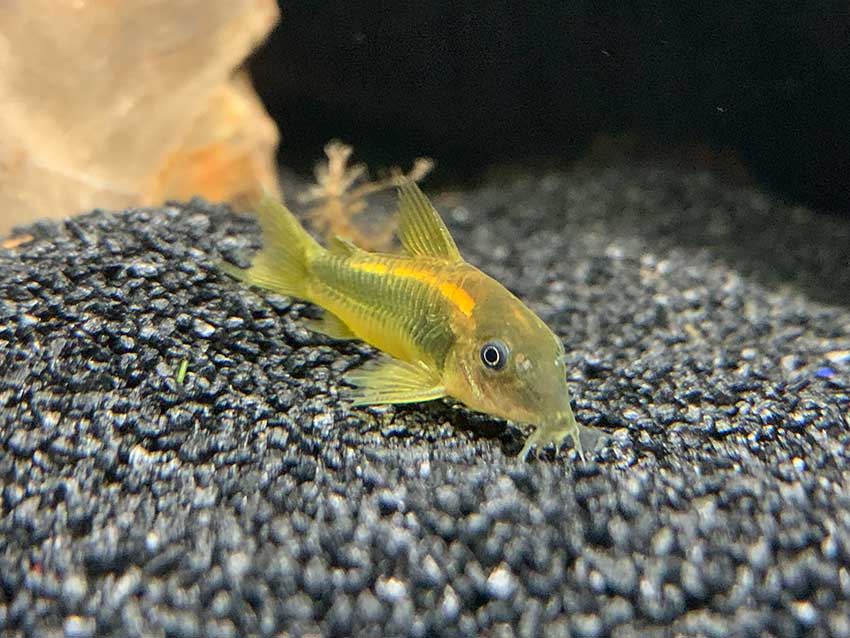
Laser corydoras are truly stunning fish and great fish for a 20 gallon tank. Laser Corys are native to Peru. They are known for their beautiful metallic coloration which at first glance might make you do a double-take.
Laser Corys are peaceful fish. They do best when placed in a tank with other Corys.
Corys are omnivores. They’ll eat high-quality fish flakes and also frozen fish foods. You’ll often find laser corydoras hiding out in your tank or munching on leftover food. Which is great for your tank.
2. Neon Tetras
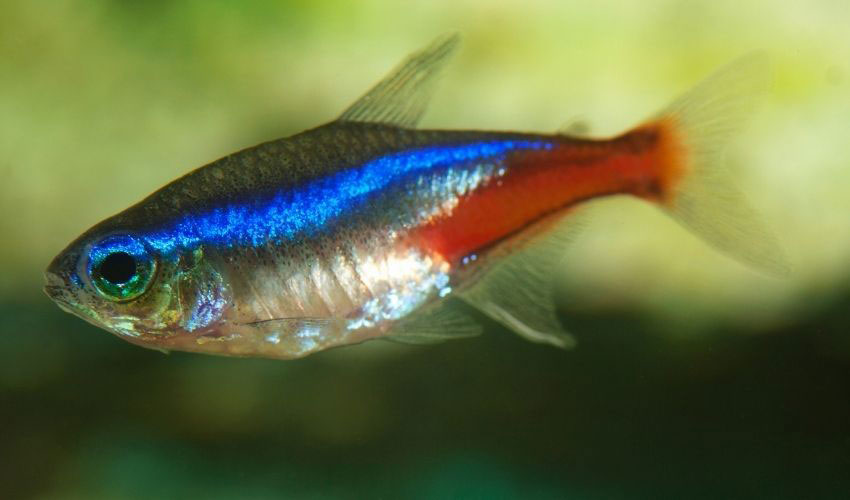
Neon tetras are another great fish for a 20 gallon tank. They are native to South America and found in Colombia, Peru, and Brazil.
Tetras are for the most part peaceful fish, but you will notice when it’s feeding time, they can get a little feisty. Other than that, they make great additions to community tanks. They also do well kept in schools.
Since these fish are peaceful and not known for being overly aggressive, it’s a good idea to keep them with other peaceful fish.
Neon tetras are easy to care for and are omnivores. They love fish flakes and will even go crazy for frozen bloodworms.
3. Hatchetfish
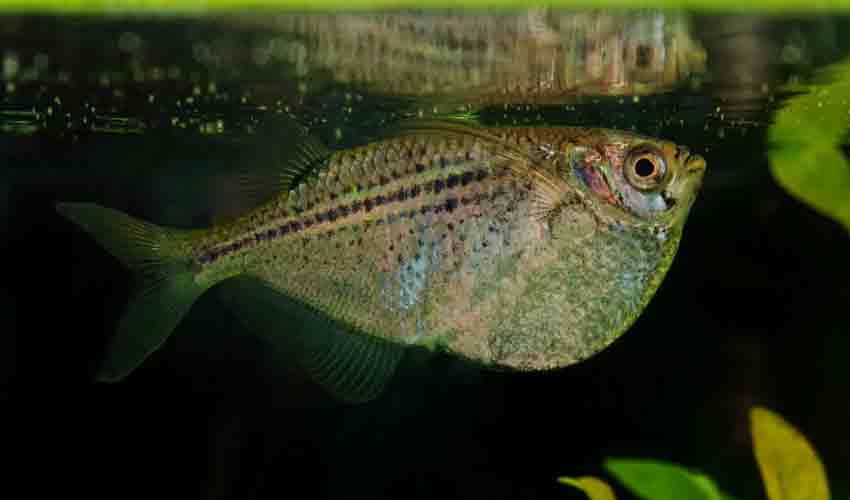
The hatchetfish is a great little fish for a 20 gallon community fish tank. The oddly-shaped hatchetfish is indigenous to South America and can be found in Peru, The Guianas, and Venezuela.
Hatchetfish are peaceful fish. You’ll notice that a lot of times they swim near the upper part of the tank around the water surface. Although this is a bit of a timid fish, because of its swimming habits, I’ve been able to keep hatchetfish with my blue crayfish over the years. Note, keeping any fish with a crayfish can be risky, but the hatchetfish worked well for me.
These guys are carnivores. They should be fed protein-rich flakes, brine shrimp, bloodworms, and other fish foods with protein.
4. Blue Crayfish
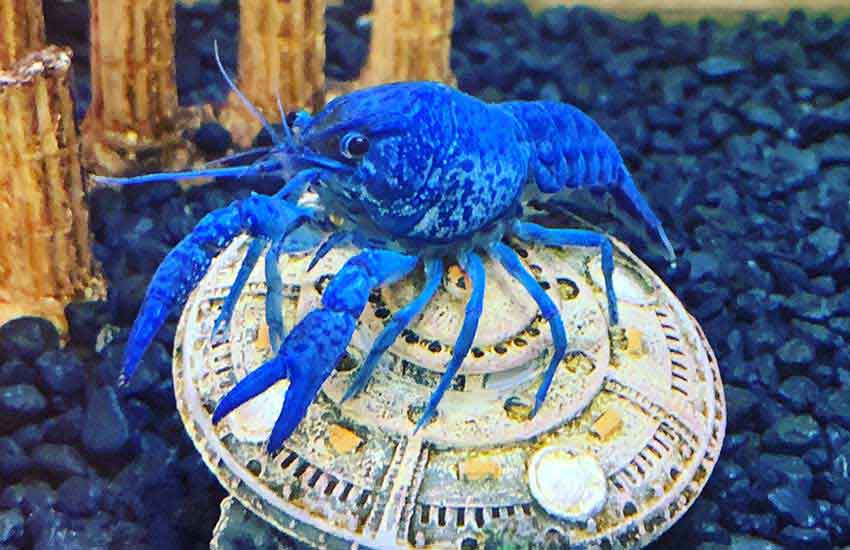
Although not a fish, blue crayfish are wild and mesmerizing creatures that can be kept in a 20-gallon fish tank. These omnivores are native to Florida and have an electrifying blue color. However, they can only be kept with certain types of fish because of their aggressive nature.
Also, blue crayfish put out a lot of waste. So, if you plan on keeping one in a 20-gallon tank, you’ll need to be careful about the types of fish you keep with them, and you’ll be limited in the number of fish you can keep.
I’ve kept a blue crayfish in a 20-gallon tank with a neon tetra and hatchet fish for years with no issues (for the most part). However, to be on the safe side, it might just be best to keep a blue crayfish in a 20-gallon tank all by itself.
Always remember to provide crayfish with plenty of hideouts. As far as feeding, these guys are omnivores and will eat anything. But sinking pellets, frozen vegetables, and frozen bloodworms will work best.
5. Rasboras
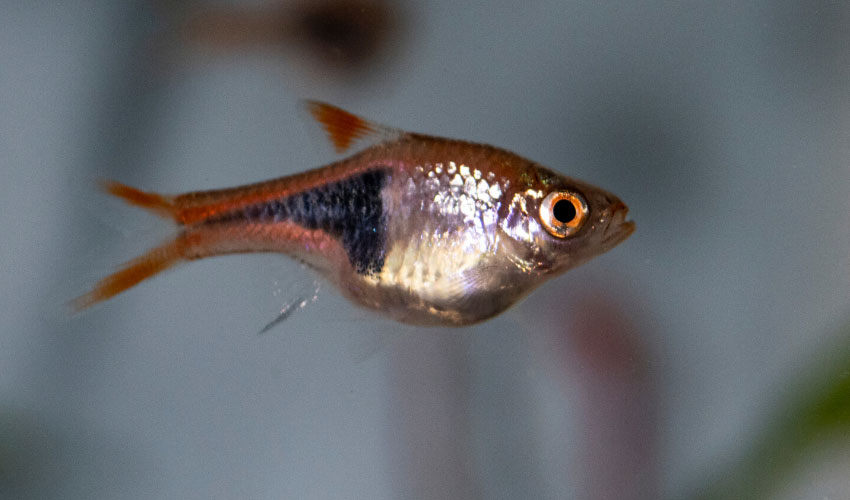
Rasboras are native to the freshwaters of Southern and Southeastern parts of Asia and China. Rasboras are schooling fish and several can be kept together in a fish tank. Of course, the number always depends on how big your tank is and the other fish you are keeping in it.
Rasboras are omnivores. In nature, these fish eat insects, worms, crustaceans, etc. But, in captivity, rasboras do well being fed tropical fish flakes, shrimp pellets, and other types of broken-up small dried foods.
6. Guppies
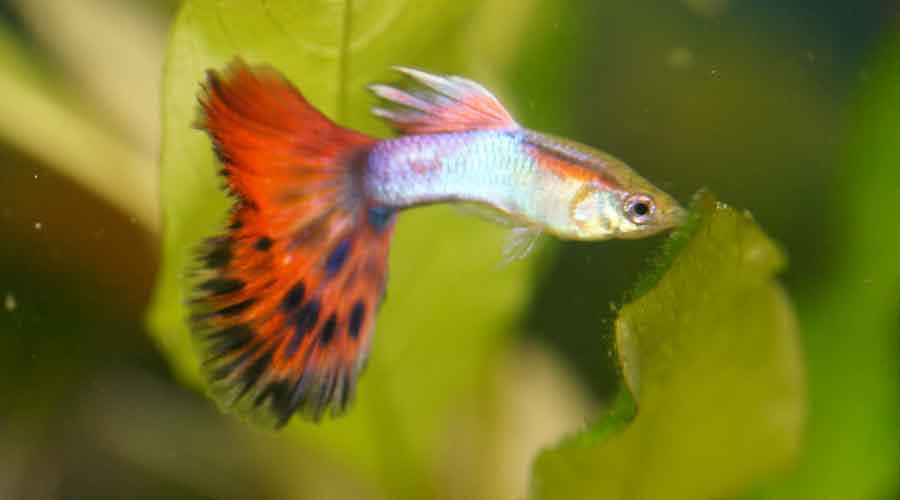
Guppies have become a super-popular fish for many fishkeepers. They are indigenous to streams in Northeast South America. Guppies are schooling fish for the most part, but not always. However, you will see them come together when a threat arises.
Male guppies can be found in a variety of colors such as blue, yellow, green, violet, and others. However, there are also rare bronze and blue types of guppies. Female guppies aren’t as colorful as males. They usually are gray and silver.
Guppies are omnivores, and in the wild, these fish eat algae, insect larvae, etc. In captivity, you can feed these guys high-quality fish flakes like these to enhance their colors.
Guppies are peaceful fish. This makes them great fish for 20 gallon fish tanks.
7. Cherry Shrimp
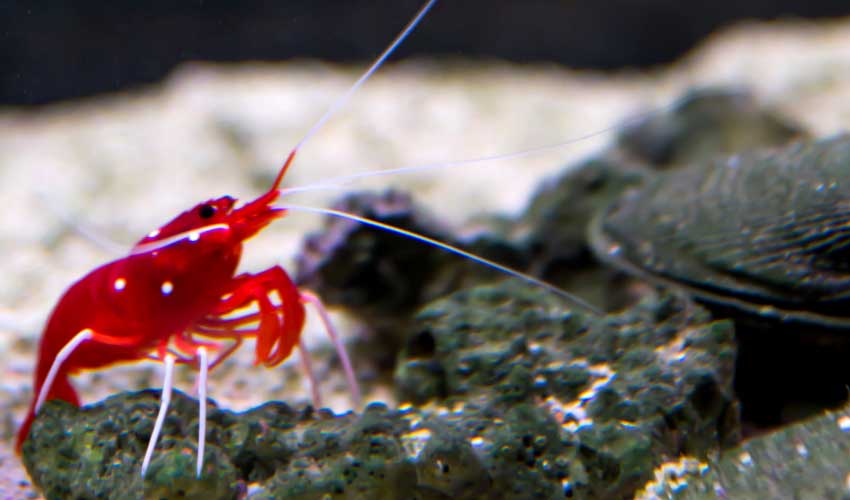
Cherry shrimp are native to Taiwan where they are found in waters that include lots of plants. Which if you are planning to keep these guys in your tank, you will want to emulate their natural habitat as much as possible. Also, you will want to use a sponge filter with cherry shrimp because they are so small they can get sucked up into regular filters.
Today most of the cherry shrimp in fish tanks are selectively bred. As you can imagine, these guys come in different shades of red. And, there is actually a color grading system for these little cherry shrimp.
These guys are tiny, so you have to be very careful about what fish you keep them with. They can be kept with corys, small tetras, and small plecos. But, whatever you do, don’t put these guys in a tank with aggressive fish.
Cherry shrimp should be fed pellets. You can find pellets formulated specifically for shrimps. Also, these guys can be fed a variety of frozen veggies.
PRO TIP: Cherry shrimps can be great for a jarrariums.
8. Zebra Danios
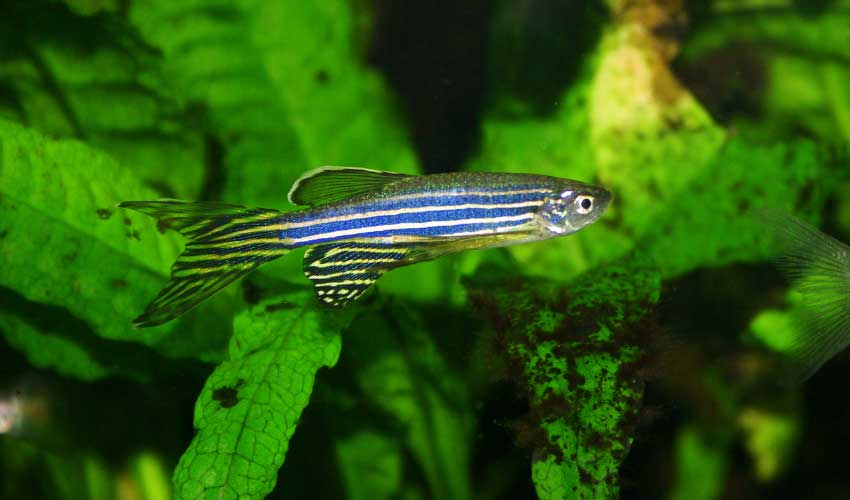
Zebra danios are a pretty popular fish choice for many aquarists. They are native to Southeast Asia where they can be found swimming in the freshwaters of Bangladesh, Pakistan, and the Ganges and Brahmaputra rivers.
Overall, zebra danios are peaceful fish and great for community tanks. However, they are known to be nippers and will sometimes go after certain types of fish with big fins. These types of fish include guppies, angelfish, and others. So you may have to select tank mates for zebra danios a little more carefully.
These fish are omnivores and will feed on algae, worms, larvae, and small crustaceans in the wild. In captivity, zebra danios can be fed high-quality fish flakes, sinking pellets, and bloodworms.
9. Electric Blue Rams
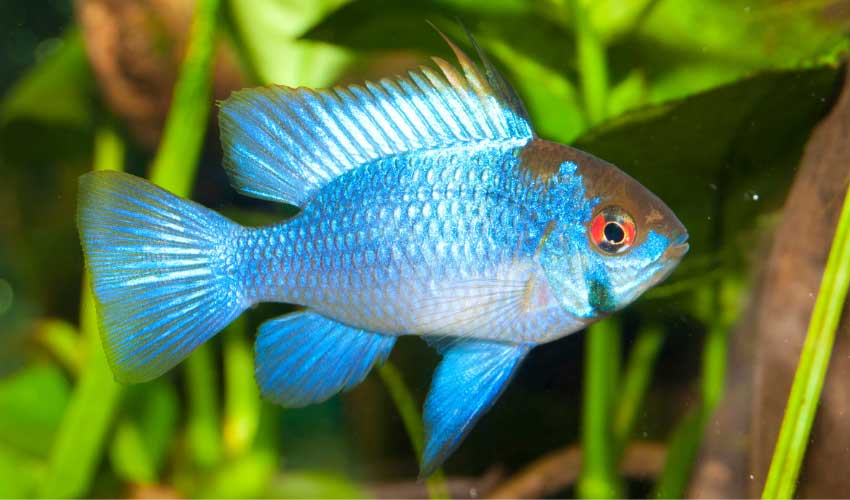
The electric blue ram is a beautiful fish that is indigenous to South America. In South America, they can be found in the freshwaters of Colombia and Venezuela.
Electric blue rams are known for their unique eyes and gorgeous colors. Depending on how the light hits them, their blue color can appear differently.
Electric blue Rams are omnivores. In their natural habitats, they will roam around the waters finding and eating plant and animal matter. In captivity, blue rams can be fed almost anything and aren’t known for being picky eaters. Electric blue rams enjoy sinking algae pellets, freeze-dried bloodworms, frozen bloodworms, and frozen brine shrimp.
The electric blue ram is a peaceful cichlid that can be kept in a 20 gallon tank with other peaceful fish.
10. Molly Fish
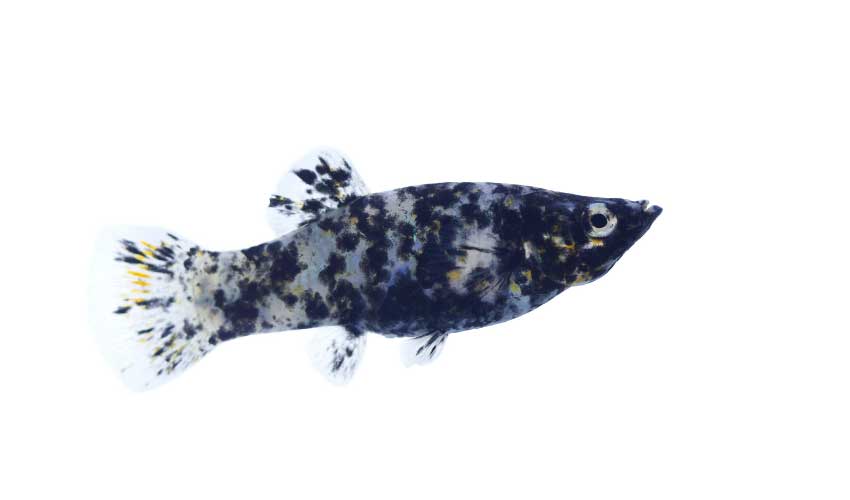
Molly fish are great fish for a 20 gallon tank. Some mollies are native to coastal areas in the United States and others are specific to Mexico. Mollies come in a variety of colors that all originate from their orange, black, and white colors.
Mollies are very peaceful fish and will do well in a community fish tank with other peaceful fish. So, never pair these fish up with aggressive fish like pea puffers, sharks, crayfish, or bettas. They will be terrorized if not killed. I learned this the hard way when I first got into the fishkeeping hobby.
Mollies are omnivores and can be fed vegetables and also sinking wafers like these. They’ll also have no problem eating bloodworms if you want to switch up their diet some.
11. Platies
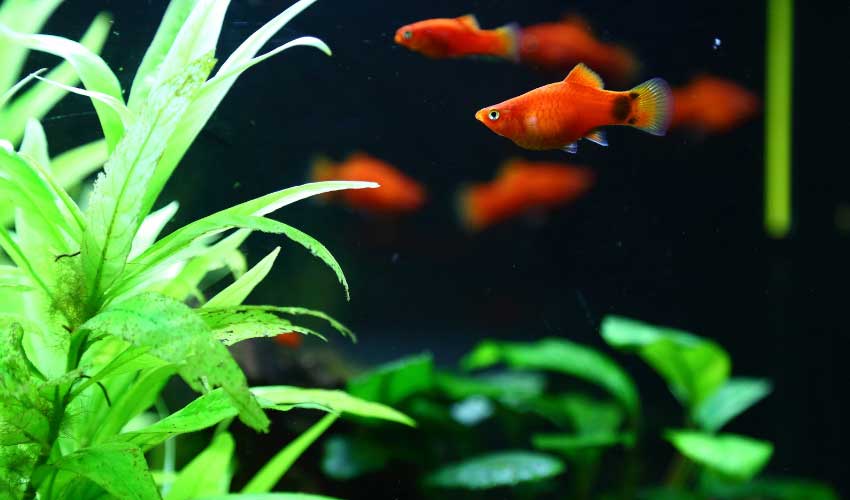
The platy is native to the coast of Central America and Southern Mexico. These are both popular and beautiful fish that come in a wide variety of colors. Colors include orange, black, blue, and other color mixes.
Platies are schooling fish. They do very well in community fish tanks and are often paired with mollies, tetras, guppies, and others.
Platies are omnivores and can be fed a variety of foods that include algae-based fish flakes and pellets, freeze-dried bloodworms, and brine shrimp.
12. Mexican Dwarf Crayfish
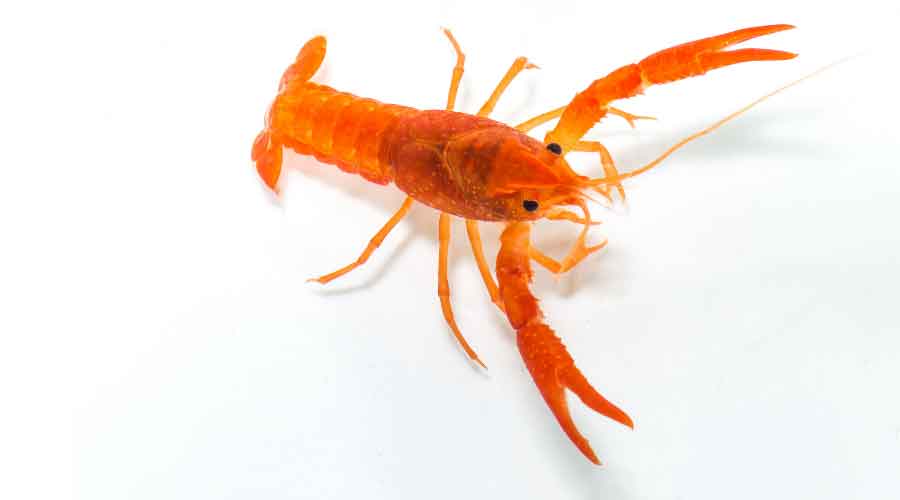
Mexican dwarf crayfish are smaller than the larger crayfish, of course. And, many aquarists have differing opinions about this popular dwarf crayfish.
In short, these guys do seem to have better temperaments than the larger crayfish, and many aquarists keep them in community tanks. However, they are still crayfish and have all of the attributes that all crayfish have. They can be aggressive and territorial, will chase your fish, and can still go after your plants.
Like other crayfish, these guys need places to hide in the tank. They are also omnivores and will do well with sinking algae pellets, frozen vegetables, and frozen fish foods.
If you keep a Mexican dwarf crayfish in your community tank, you will need to keep it with fish that swim near the middle to the top of the tank.
13. Pea Puffers
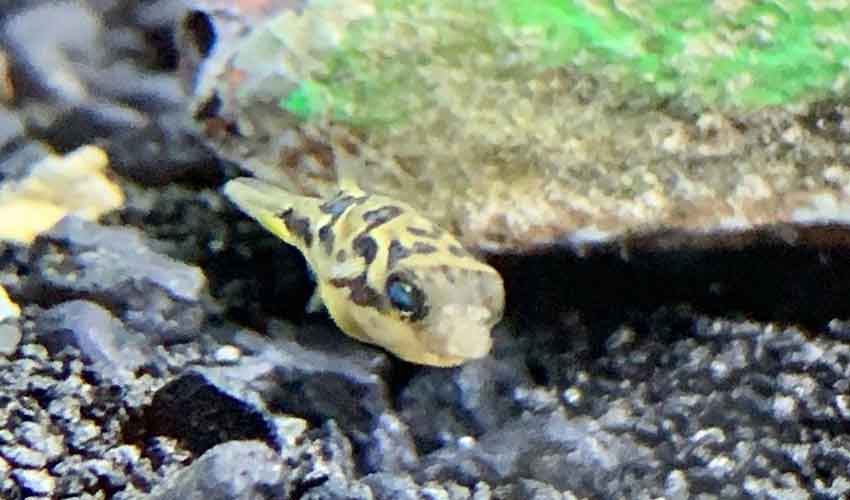
Pea puffers are a riot! Also known as the “dwarf puffer fish,” pea puffers are native to South India where they are found in lakes, streams, and other freshwaters.
Pea puffers are highly sought after by aquarists. Dwarf puffers are known for not only being so small but their temperament. Don’t let their size fool you, these guys are extremely aggressive.
Each pea puffer needs five gallons of water. So, with a 20-gallon tank, you can keep four pea puffers. These fish do well when kept in tanks all by themselves although some aquarists do keep them with other specific types of fish.
When it comes to feeding time, give these fish frozen bloodworms. They’ll slurp them up like they are eating Twizzlers.
14. Bristlenose Plecos
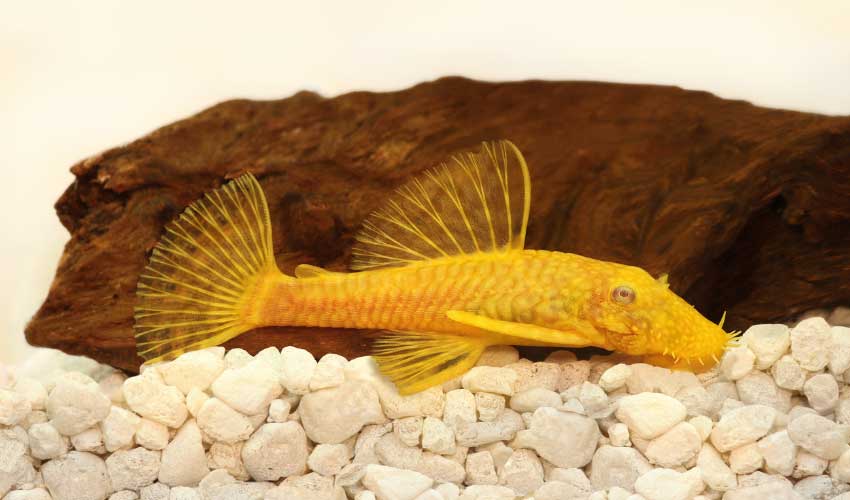
The bristlenose pleco is an interesting-looking fish, and its name pretty much explains it all. These fish are native to South America and can be found swimming in the Amazon River Basin.
The bristlenose pleco is overall very peaceful. They are hardy fish and are great for cleaning up algae in fish tanks.
These guys can grow to be between three to five inches. So, in a 20-gallon tank, you’d probably only want one as these fish can be a bit territorial with each other, especially with two males.
For the most part, bristlenose plecos are herbivores. They will eat a variety of things, but they do best on plant-based foods. You can feed bristlenose plecos vegetables, spirulina, and sinking algae pellets.
An interesting fact about these little guys is that they do not have scales.
Selecting Your Fish for a 20 Gallon Tank
As you select fish that are recommended for tanks that are 20 gallons, again, you’ll also need to research compatibility between each of your fish. Over the years, I’ve kept both corydoras and blue crayfish. They both work well for 20 gallon tanks, but not if they are kept together.
Fish Tank Stocking Idea 1
If you are looking for an interesting combination of fish, you could keep a couple of laser corydoras, a few cherry shrimp, and a blue ram. Based on the one inch of fish per gallon of water, that puts you at about 7.5 gallons of water used and leaves room for more fish. Because both blue rams and laser corys grow to be roughly two and a half inches.
Fish Tank Stocking Idea 2
If you are looking to get a little wilder with your tank, you could keep a blue crayfish OR Mexican dwarf crayfish with a few middle to top of the tank swimmers. I’d suggest hatchetfish and tetras. These are fish that I’ve successfully kept with my crayfish over the years. But, beware, any fish can fall victim to crayfish at any time. It just depends.
Cycling Your 20 Gallon Tank
Before you get started adding any fish to your 20 gallon tank, you should always cycle your tank first. Without proper cycling, your fish could die. So never skip this step. If you are looking for a way to cycle your fish tank faster, check out my guide. I was able to cycle my tanks in eight days.
The Importance of Water Changes
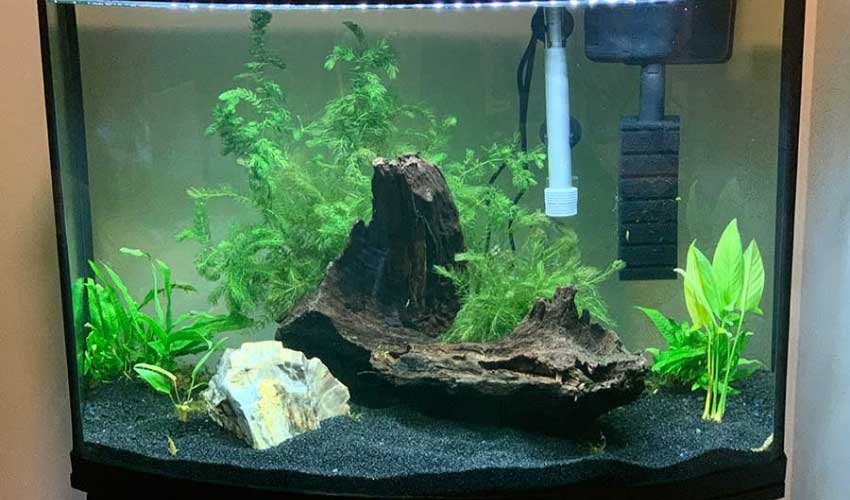
Water changes with any fish tank are essential. Cycling the water in a fish tank helps set up a natural biofilter to protect your fish against toxins from their waste. Water changes are another part of keeping a healthy tank and should be done regularly.
Water change frequency will always vary based on tank size and the types and number of fish you keep.
Fish for 20 Gallon Tanks: A Review
20 gallon tanks can be a perfect size fish tank for housing a variety of both beautiful and peaceful fish. As you select the fish for your tank, you should always do your research on a fish’s temperament, tank mate choices, water conditions, and food.
Our Recommendations
